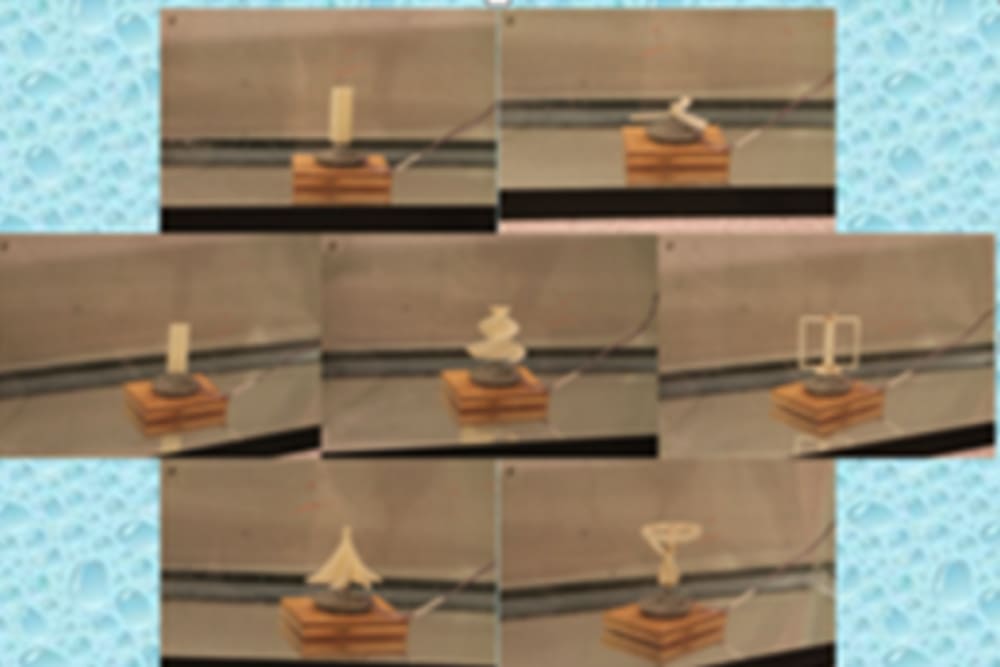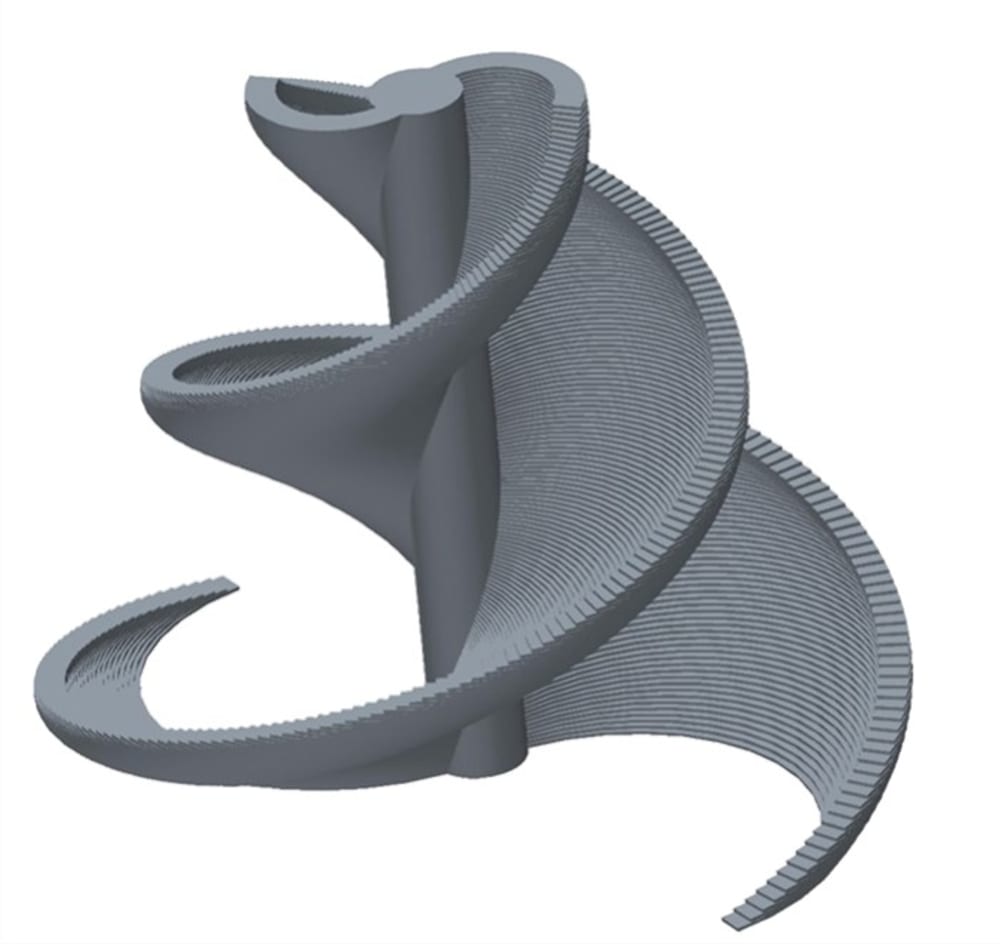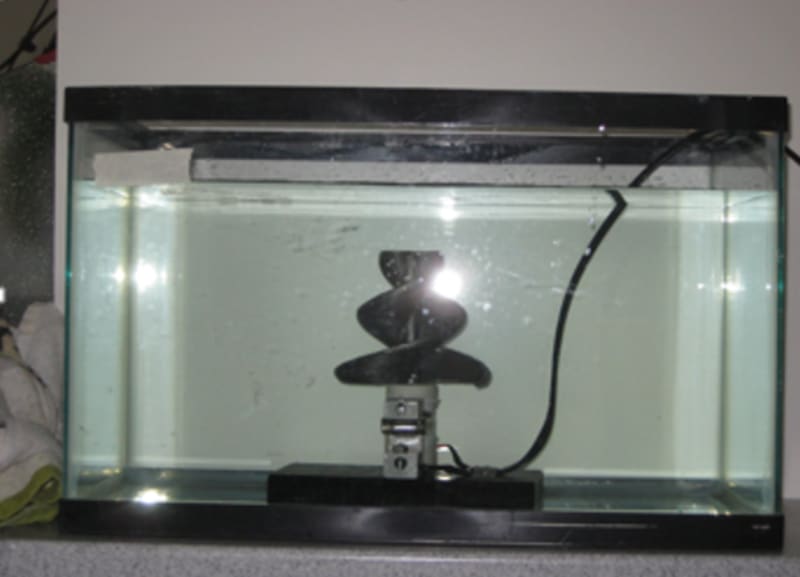This Helical Impeller was designed to solve the problem of the Dead Zone in the Gulf of Mexico. The Dead Zone is an area where the oxygen-rich fresh water at the surface does not mix with the oxygen-poor saltwater on the bottom, creating a region on the sea floor with no oxygen. Since there is no oxygen at the bottom, the fish move out of the Dead Zone area and coral and non-mobile animals are killed off since they cannot relocate. This problem has cost the fishing industry in the Gulf of Mexico nearly 80 million dollars. Many organizations, such as NOAA and LUMCON, are trying to find ways to decrease the size of the Dead Zone, but most of the proposed solutions are focused on decreasing the nutrient pollution which is a primary cause of the Zone. These solutions, such as reducing the amount of pesticides used in farms, would hurt our economy.
I did a science fair project where I tested several different mixing designs on the market, trying to find a design that could efficiently mix the salt and fresh water. I took a 10 gallon fish tank, filled it with 8 gallons of saltwater, and then gently added two gallons of fresh water with food coloring, making sure to keep the two layers separated. The intent was to simulate the fresh water/saltwater situation in the Gulf. Then I attached the 3D printed mixing devices to a small motor and placed the motor and mixing device at the bottom of the tank. My design, a 3D printed Helical Impeller, completely mixed the whole tank in about a minute. None of the other designs, including several designed used for commercial paint mixers, were able to completely mix the salt and fresh water in the 5 minutes allotted for each test.
My Helical Impeller design was influenced by an Australian engineer, Jay Harman, who noticed how everything in nature moves in a spiraling shape, and that nothing takes a linear pattern, while most everything that is man-made resembles a linear design. He developed a mixing device that resembled a tulip shape, thus being called the Lily Impeller. This design, with its more circular design, was able to mix 10 million gallons of water, with minimal amount of power (harvested from the sun) and only being around six inches tall. While I was designing my impeller, instead of a tulip shape, I decided to make a Helical Impeller with a shape similar to a sea shell, or more specifically the nautilus shell, starting larger at the base of the impeller then getting smaller as it moves vertically (opposite of the Lily Impeller, which has a smaller base and grows as it grows vertically).
My hope is that an array of these Helical Impellers can be set up in the Gulf to breathe life back into the Dead Zone.
Video
Like this entry?
-
About the Entrant
- Name:Arthur Schlauch
- Type of entry:individual
- Software used for this entry:CREO Parmetric
- Patent status:none








